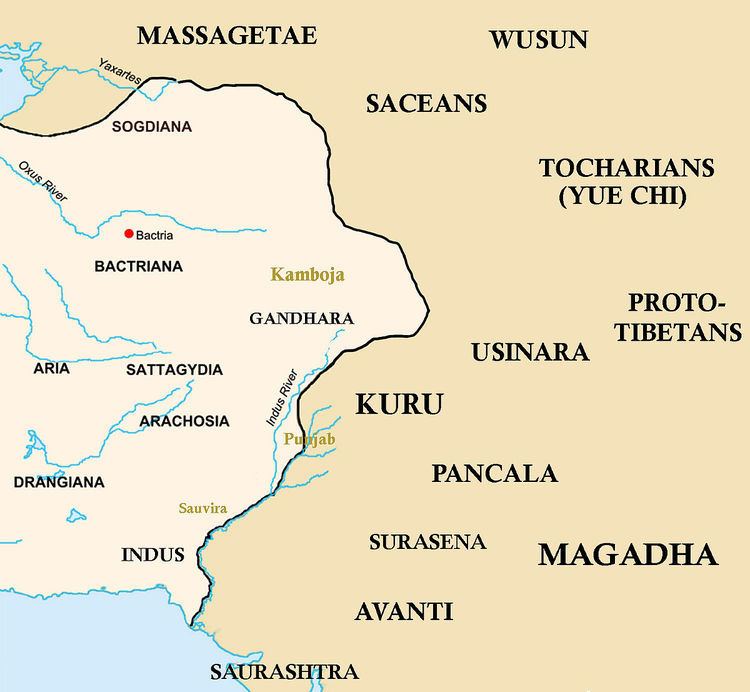 | ||
The Achaemenid invasion of the Indus Valley is the Achaemenid military conquest of territories of Ariana or Pakistan. Achaemenid penetration into the area of Pakistan occurred in stages, starting from northern parts of the River Indus and moving southward. The Persian empires generally considered the Punjab as their easternmost boundary.
Historical background
The important communities in the region were the people of Punjab, the Kambojas and Sindhis. Punjab consisted of Taksas of Gandhara, the Madras and Kathas (Kathaioi) on Akesines, the Mallas on Hydraotis and the Tugras on Hesidros. In the first half of the sixth century, these several small principalities fought against one another. This region did not have any powerful state to wield the warring communities into one organized kingdom. The area was wealthy, and could be entered through the passes of the Hindu Kush. The Achaemenids took advantage of the political disunity and penetrated into the region.
Gandhara/Taxila in Punjab was conquered by Achaemenid empire in 518 BC. During this time, Pushkarasakti, a contemporary of King Bimbisara (558–491 BC) of Magadha empire of Haryanka dynasty, was the king of Gandhara. Pushkarasakti was engaged in power struggles against his local rivals. Achaemenids under Darius penetrated to the region in 516 BC, and annexed other parts of Punjab west to Indus river and Sindh.
The upper Indus region, comprising Gandhara and Kamboja, formed the 7th, Gandhara satrapy of the Achaemenid Empire (including Sattagydians, Dadicae, Aparytae), while the lower and middle Indus, respectively comprising Sindh and Sauvira, constituted the 20th satrapy (called Indian/Sindh/Hinduš Satrapy).
The conquered area was the most fertile and populous region of the Achaemenid Empire. Indus Valley was already fabled for its gold; the province was able to supply gold dust equal in value to the very large amount of 4680 silver talents. Under the Persian rule, a system of centralized administration with a bureaucratic system was introduced in the region and scholars such as Pāṇini and Kautilya lived in the environment. A certain number of Indus Valley people were recruited to the Persian army in that time, and Achaemenid ruler Xerxes employed them in his wars against the Greeks.
By about 380 BC, the Persian hold on the region was weakening, but the area continued to be a part of the Achaemenid Empire until Alexander's invasion.
The ancient Greeks also had some knowledge of the area. Darius I appointed the Greek Scylax of Caryanda to explore the Indian Ocean from the mouth of the Indus to Suez. Scylax provides an account of the voyage in his book Periplous. Hecataeus of Miletus (500 BC) and Herodotus (483–431 BC) also wrote about the Indus Satrapy of the Persians.
